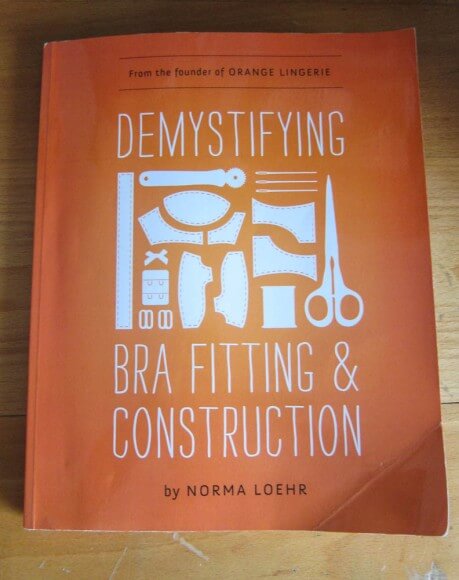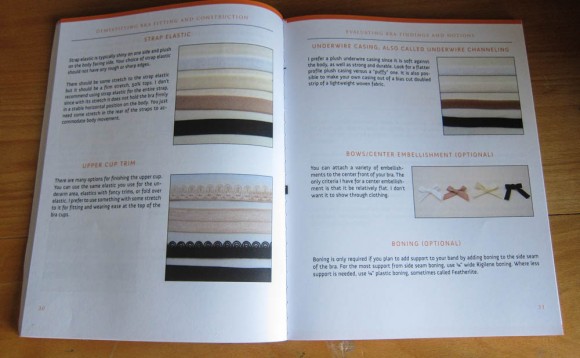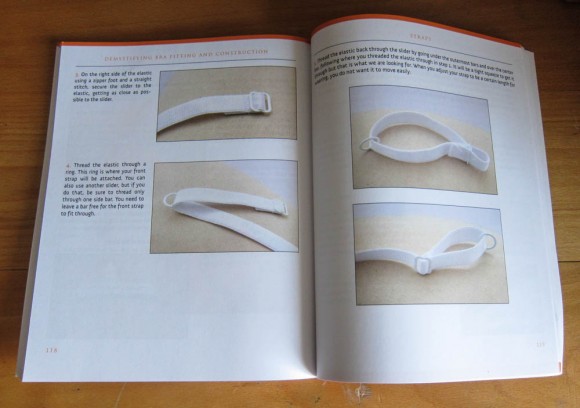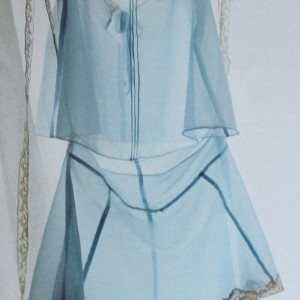Lingerie Book Review: Demystifying Bra Fitting & Construction by Norma Loehr
Note: This book was purchased for the purpose of review. All opinions are my own.

Home sewing seems to have made somewhat of resurgence in recent years – everywhere you look, there are guides and how-to projects on how to make everything from dresses to cushion covers. In the UK there’s even a nationally broadcast TV show called ‘The Great British Sewing Bee’. Whilst there are plenty of books, magazines and websites dedicated to clothing and home improvement sewing projects, bras have been left conspicuously behind. Which isn’t exactly surprising – wired bras are one of the most complex garments that you can try to sew yourself. They feature some of the most precise and varied sewing operations in a single garment, with at least around 30 individual parts to each garment.
I recently finished a three-year degree specialising in lingerie. However, before I began my course, I remember scouring the internet for books that would help me get to grips with lingerie construction. There was very little on offer – all I recall finding was Ann Hagar’s ‘Pattern Cutting For Lingerie, Beachwear and Leisurewear’ which, for a newbie, wasn’t much help. So discovering Norma Loehr’s ‘Demystifying Bra Fitting and Construction’ was a pleasant surprise. In an industry so lacking in resources for hobbyists, Loehr’s book is a step in the right direction.
'Demystifying bra fitting and construction' by Norma Loehr is currently available through Amazon, at $26.12 for the paperback edition and $15.88 for the Kindle edition. I’ll happily admit that I’m not the target audience for this book, so my approach will be a little different to the average customer’s. Unfortunately, I found quite a lot of issues with this book as a resource for bra-construction newbies. To give the short review, I found it to be simultaneously over-complicating and over-simplistic, though peppered with useful tips.
Whilst there is a lot of useful information shared in this book, particularly with regards to the basics of bra construction which are not readily available, I also found that there was quite a lot of misinformation. My opinion of this book got off to a fairly rocky start. It starts with 10 ‘reasons to sew your own bras’, the majority of which I heavily disagree with. For example, it lists that ‘It is cheaper than buying a bra… It is faster and more efficient than shopping for a bra… You get exactly what you want… You get a bra that fits’. In my personal experience, these reasons can only be true once you are highly experienced in sewing bras, highly experienced in lingerie pattern cutting, and able to purchase lingerie-specific fabrics and components in bulk. In any of these situations, it is highly unlikely that you would look to a book like this for help.

Nevertheless, this book does offer a lot of useful tips. The basics are covered very accurately – Loehr clearly explains a variety of different lingerie components and their different functions, with illustrations alongside. Whilst a lot of these photographs aren’t quite as clear or big as I’d like (and some are in fact quite pixellated), they’d certainly be useful as an introduction. I particularly appreciate the depth that she goes into with regards to lingerie fabric, explaining their handling and how this can affect bra fit. There are some excellent tips on how to customise a bra pattern to fit your own body. One tip in particular -- on how to modify the bra’s cradle to fit your own body shape -- is easily worth the entire price of the book.

As I mentioned before, I found this book a little limiting in what it had to offer. It refers to few cup shapes, limited mostly to a horizontal seamed two-part cup construction (though it also gives instructions on how to split the bottom cup for a more rounded shape). It also only refers to soft fabric cups, with no reference to how to construct foam bras or how to use moulded cups. There are also certain assumptions about bra components (particularly bra wires) that I find a little unrealistic for a bra newbie. For example, I have yet to encounter a single bra wire supplier that will send a style chart unless you’re buying at least a thousand pieces. In addition, the book doesn’t fully address how much a wire can affect bra shape, and the fact that just any bra wire cannot be put into an existing bra pattern and expected to fit. I found this particularly problematic as the book gives such limited pattern cutting advice – a bra’s pattern should be built to fit a wire, and not vice versa.
I also found that the book overcomplicates certain areas of construction, using methods that I personally don’t agree with, and wouldn’t recommend to a beginner. I also found the book a little difficult to read at times – the text could get long-winded and difficult to follow, and could certainly benefit from some editing. However, whilst I found large areas of this book problematic, overall I still think it is a good basic resource for craftspeople who haven't encountered bra-making before. It is certainly a step in the right direction in an area that is so woefully lacking in information.
Readers: have you ever tried to make a bra? Would you consider buying this book?







